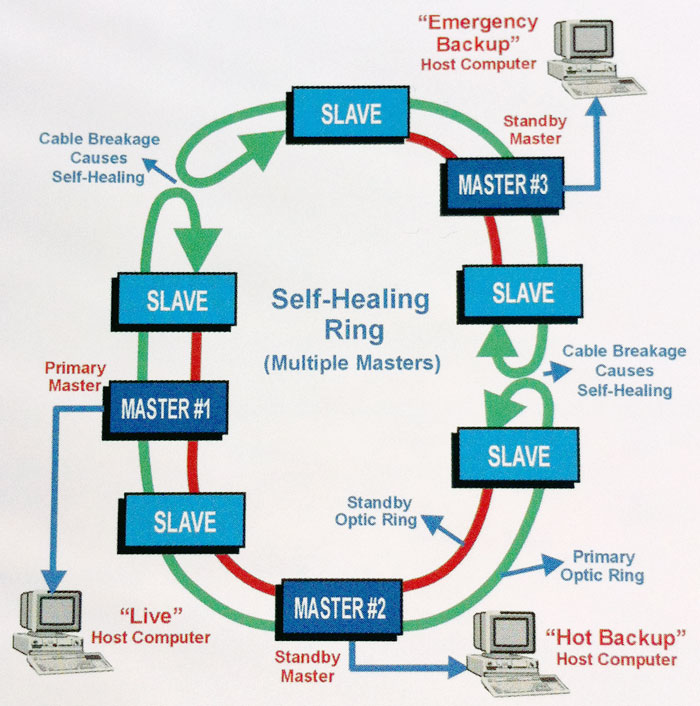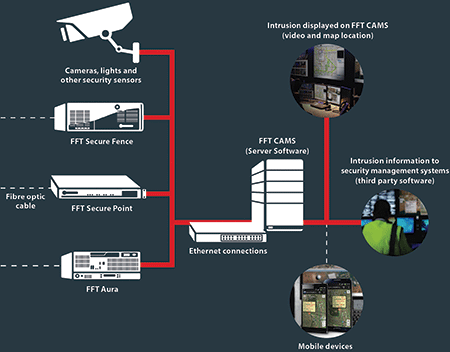Why Fiber Optic Security Solutions Are the Future of Security
The transition to fiber optic safety and security systems marks a significant innovation in the world of defense, driven by their phenomenal information transmission capacities and durability to external interferences. As the landscape of safety and security evolves along with arising innovations such as AI and IoT, the potential for fiber optics to enhance and redefine security frameworks ends up being significantly noticeable.
Benefits of Fiber Optic Systems
One of the key benefits of fiber optic systems is their exceptional data transfer ability, which assists in the transmission of big volumes of information over cross countries without substantial loss. This particular is especially advantageous for safety and security applications that require the constant surveillance and transfer of high-def video feeds, sensing unit data, and various other important details. Optical fiber can fit the growing demands of modern safety systems, guaranteeing that data continues to be undamaged and reliable.
In addition, fiber optic cords are less vulnerable to electromagnetic disturbance, which can be a significant problem in environments with different digital devices. This resistance boosts the integrity of the data being sent, thus lessening the threat of data violations or system failures. Fiber optic systems are naturally much more safe than standard copper cables, as touching into a fiber optic line without detection is exceptionally difficult.
The resilience of fiber optic cables likewise adds to their charm. They are resistant to environmental variables such as dampness and temperature variations, lowering upkeep prices and increasing system durability. In general, these advantages position fiber optic systems as a durable and reliable selection for modern-day security facilities, ensuring reputable and safe data transmission.
Improved Information Transmission Speed

The ability to transmit substantial amounts of information promptly helps with the smooth integration of high-def video feeds and advanced analytics. Safety systems can currently process and examine details in real-time, boosting feedback times and situational recognition. Additionally, fiber optic links sustain longer transmission ranges without destruction of signal high quality, making them suitable for large safety networks.
The boosted rate of fiber optic systems not just enhances the efficiency of security operations however likewise reduces latency. This is especially crucial in crucial scenarios where prompt decision-making can protect against safety violations or minimize prospective dangers. As companies remain to focus on safety and efficiency, the need for fast and trusted information transmission will most certainly strengthen fiber optic systems as a keystone of contemporary safety and security framework.
Resistance to Disturbance
Fiber optic safety and security systems consistently show outstanding resistance to electromagnetic disturbance, an important advantage in environments prone to digital sound. Unlike standard copper cables, which can be negatively affected by magnetic fields, more helpful hints superhigh frequency disturbance, and various other types of electrical disruption, fiber optic cables make use of light to transmit data. This intrinsic building makes sure that the signals remain clear and unchanged, no matter bordering digital activity.
The usage of glass or plastic fibers in fiber optic innovation develops a barrier versus disturbance, permitting dependable information transmission even in difficult scenarios such as commercial centers, metropolitan locations with high electronic web traffic, or areas near radio towers. This characteristic considerably lowers the probability of signal degradation or loss, making fiber optic systems especially ideal for safety applications where integrity and precision of data are extremely important.
Furthermore, this resistance to disturbance enhances the general efficiency and dependability of security systems, guaranteeing that monitoring and sharp systems function effortlessly. In a globe where protection is increasingly threatened by sophisticated modern technologies, the resilience of fiber optic systems stands apart as a pivotal feature, strengthening their condition as a vital element of modern-day safety infrastructure.
Cost-Effectiveness In Time
Considerable price savings can be accomplished gradually with the implementation of fiber optic protection systems. While the first investment Discover More Here may seem higher contrasted to standard copper-based systems, the long-lasting monetary benefits emerge through reduced operational and maintenance prices (fiber security). Fiber optic cable televisions are inherently more durable and less vulnerable to ecological factors, which equates to decrease substitute and repair service expenses over their life-span
Furthermore, fiber optic systems call for less power to operate, which even more lowers energy expenses. Improved information transmission abilities allow for fewer repeaters and amplifiers, decreasing equipment financial investment and streamlining setup procedures. The scalability of these systems also adds to cost-effectiveness, as organizations can increase their protection framework without incurring considerable extra expenses.
One more factor to think about is the raised efficiency in tracking and response capacities that fiber optics offer. Boosted real-time data transmission can lead to quicker incident feedback times, potentially mitigating losses and obligations connected with safety violations. Altogether, the lasting advantages of fiber optic safety systems not just validate the preliminary expense however also position them as an economically prudent selection for companies looking for robust defense solutions.

Future Advancements in Safety
Progressing technologies are set to change safety systems, integrating expert system (AI) and maker learning to enhance hazard detection and reaction abilities. These developments will certainly enable safety and security systems to analyze large amounts of information in real-time, identifying patterns and anomalies that indicate possible dangers. This positive strategy will certainly enable faster decision-making and much more reliable incident feedbacks.
In addition, the consolidation of the Web of Points (IoT) is leading the means for interconnected security tools, providing thorough security and surveillance. Smart sensing units can relay information about environmental adjustments, while automated informs can inform safety employees immediately of suspicious tasks.
Furthermore, the evolution of biometric modern technologies will better strengthen safety devices. Facial acknowledgment, finger print scanning, and retina recognition are becoming extra advanced, giving layers of authentication that are hard to bypass.
Verdict
Finally, fiber optic security systems stand for a considerable development in security technology, supplying exceptional data transmission speed, resistance to electro-magnetic interference, and long-lasting cost-effectiveness. As the demand for advanced protection try this web-site options continues to expand, the assimilation of fiber optics with arising modern technologies such as AI, IoT, and biometrics will certainly additionally enhance safety infrastructures (fiber security). The mix of these developments will certainly guarantee an extra secure and responsive environment, strengthening optical fiber as a keystone of future protection systems